A big ice storm can be good for a fruit tree. And icicles reveal some secrets about the storm, too. Come into my post and see!
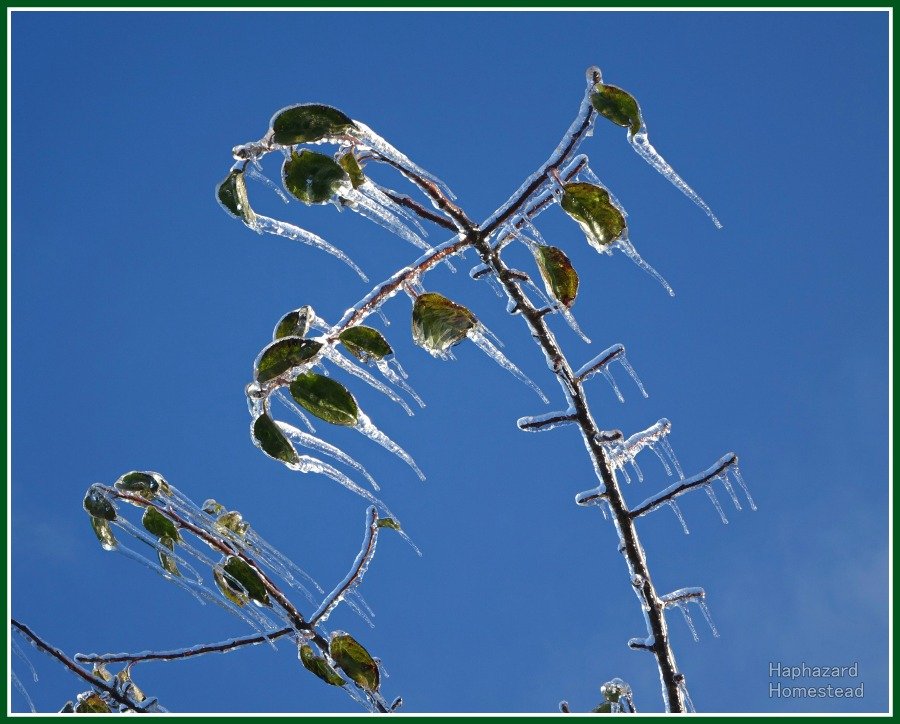
Here's the first post on the Great Willamette Valley Ice Storm of 2016. I've already shown the effect of the ice on my Sequoia and Larch Trees; Blue Spruce and Western Redcedar Trees; Noble Fir, Grand Fir, and Eastern White Pine Trees; two sets of Douglas-Firs, Ponderosa Pines, Hazel, Walnut, Birch, Holly, and Elm Trees, and Garden Plants. I'll be posting only one more ice storm photoset. And then we'll have an ice storm party!
I've got more than 40 fruit trees here at Haphazard Homestead. Don't worry - I'm not including photos of every one in this post - yikes! Instead, I want to focus on three topics -- the icicles, the tree branches, and the little flower buds waiting for spring.
1. A Quick of Ice
This ice storm made some long icicles -- and it made them quickly, too. How can I tell? Look at all the bubbles in those icicles. Rain has a lot of air dissolved in it, because little raindrops have a lot of surface area exposed to the air. And cold water holds the most dissolved air, way more than warm water, like summer rain. But when water freezes into ice, the air gets released from the water, all of a sudden. That's because the solubility of air in ice is so much lower than in liquid water.
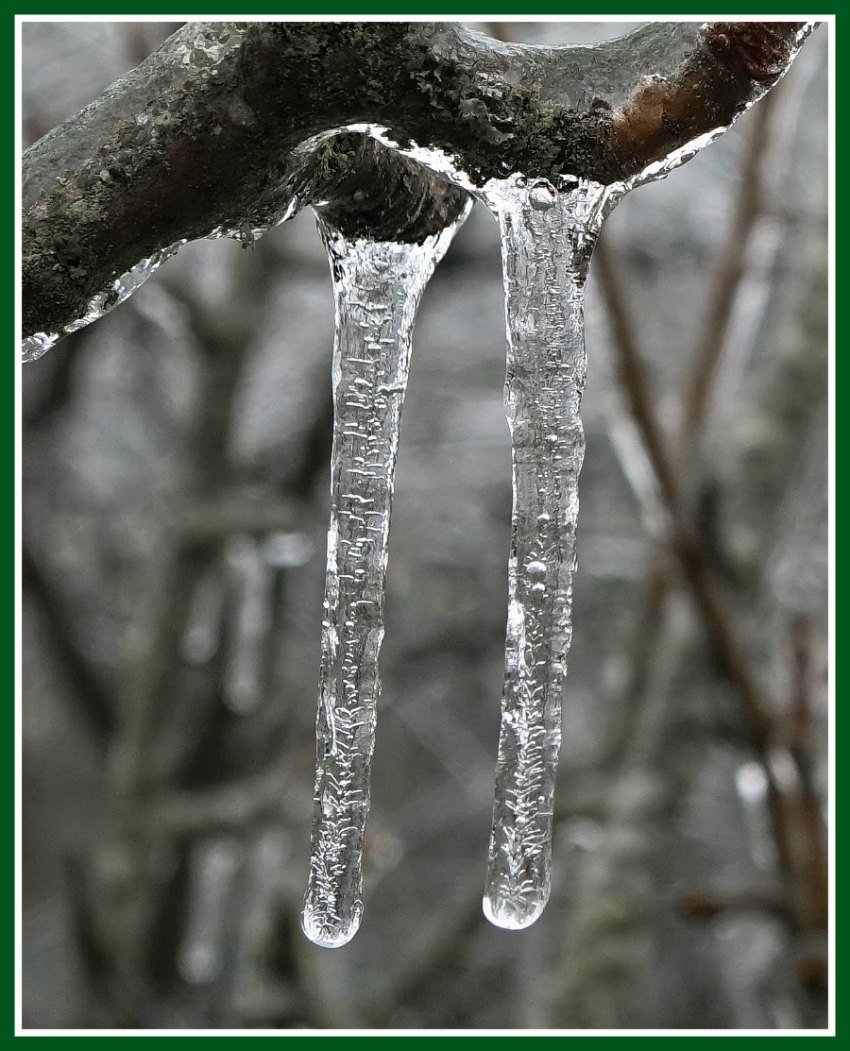
These icicles did not build up by slowly by adding layers to a tiny icicle. No -- these icicles froze from the outside into the center. The air was colder than the rain, so water dripping off the branches was coldest on the outside of each drip. When the water in the middle of the drip finally froze, the air didn't have anywhere to go. It was stuck in the middle of the icicle.
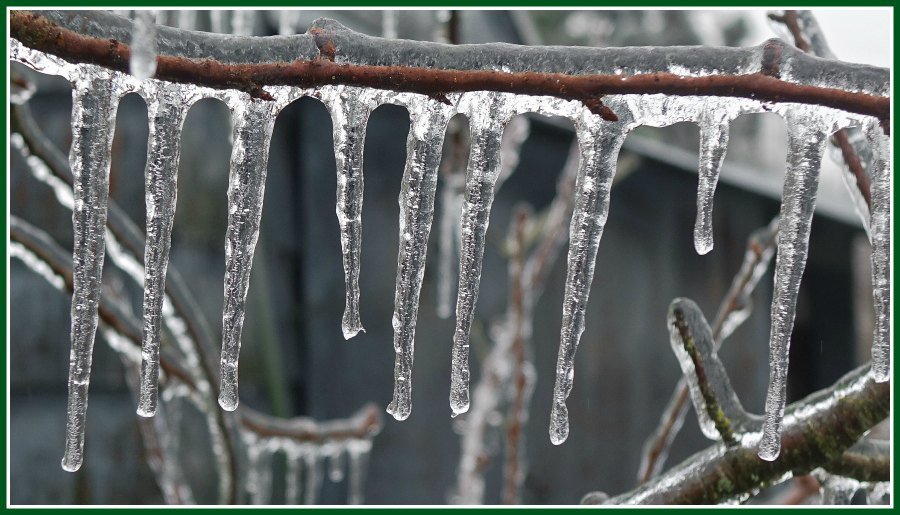
If you want to see how seriously some folks take the science of icicle growth, here's an article in the Journal of Glaciology.
2. A Tangle of Branches
This big ice storm happened in mid-December. That's way before I prune my fruit trees. So the icicles had a lot of branches to hang from! But none of the fruit trees were bothered by the weight of the ice. After all, they have to hold some hefty loads of fruit in the summer and fall!
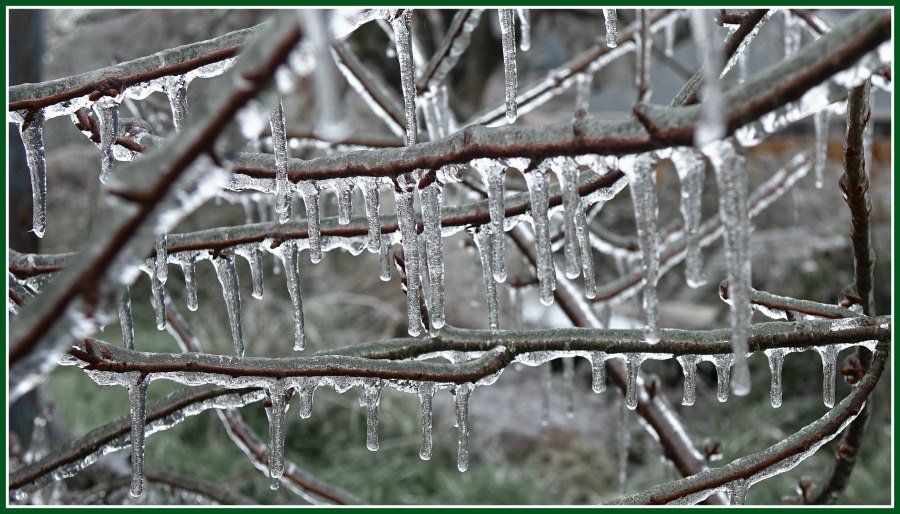
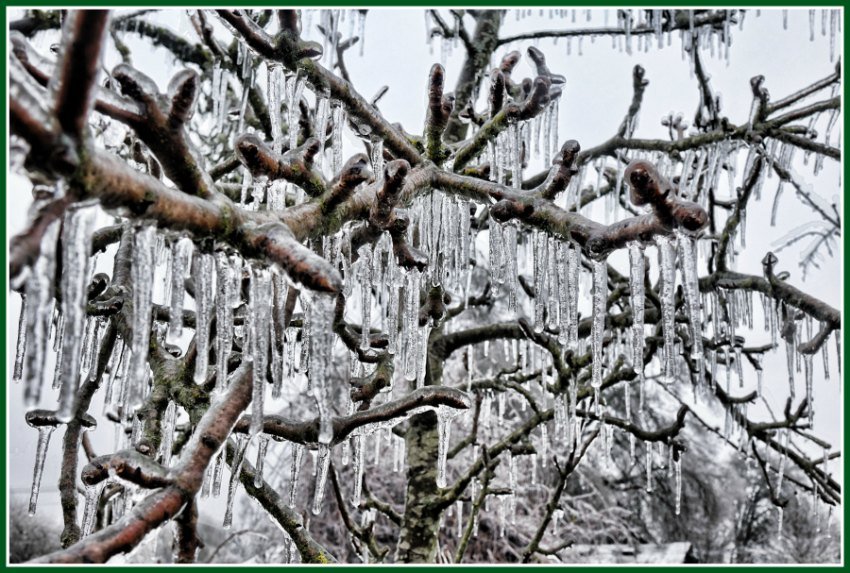
This tangled mess is a grove of wild mazzard cherry (Prunus avium). Can you tell that it's an introduced invasive plant here in Oregon's Willamette Valley? I don't count them in my fruit tree inventory, but they are tasty little cherries.
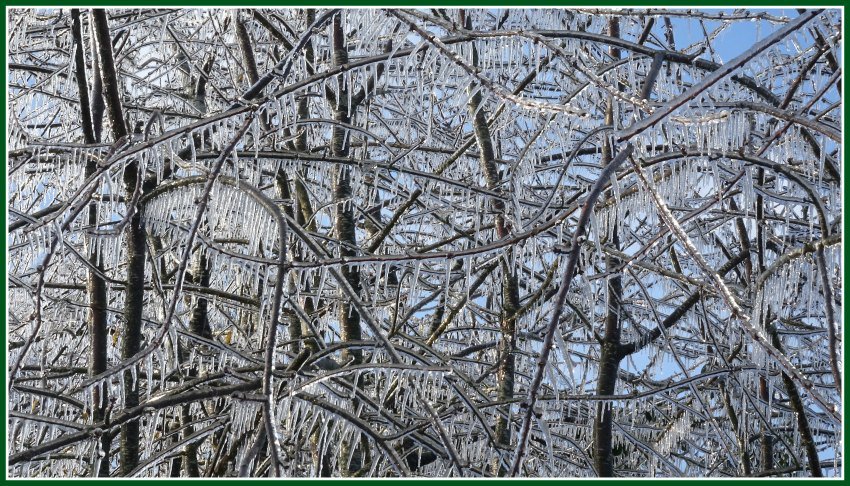
Some trees, like this Gravenstein Apple, still had a few leaves in the tree tops for the ice to hang from. Take a look at those super long icicles hanging from the branch in the lower left. Those are the longest ice storm icicles I have ever seen! The rain froze so fast that it made straight icicles before the tree tops even bent over! That's fast!

3. A Protection of Buds
There's actually a good side to ice on a fruit tree. By the time winter comes around, the fruit buds for next summer's harvest are already formed. They are just waiting for spring. The little buds can be damaged by really cold temperatures, especially if the air is dry, like after a storm moves through.
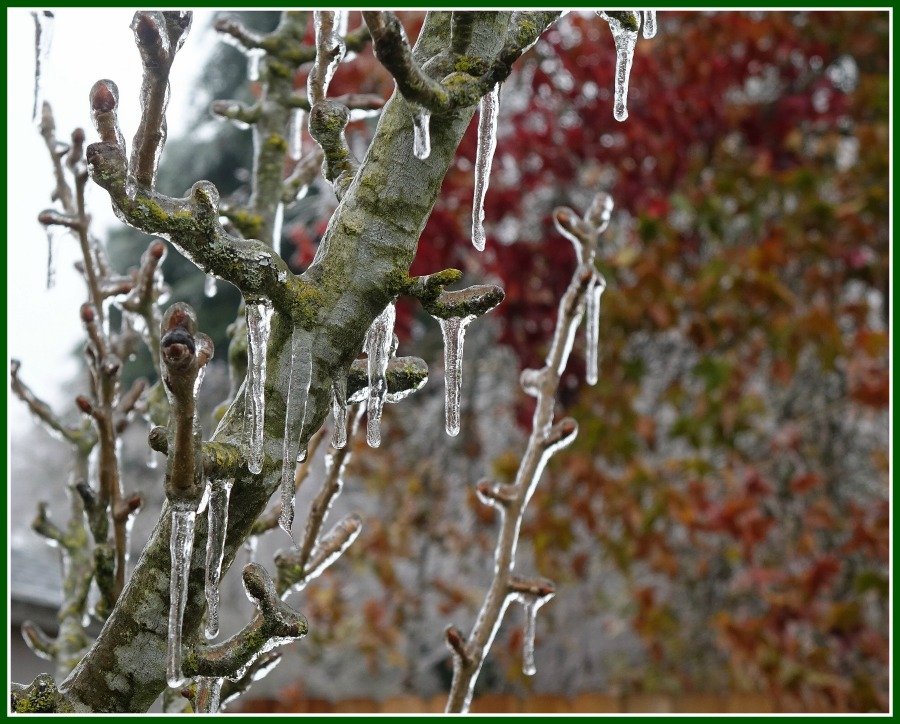
This ice stayed unmelted for four really cold days. But all the little buds were protected from the cold, dry air by their thick coat of ice. They were better off encased in ice!
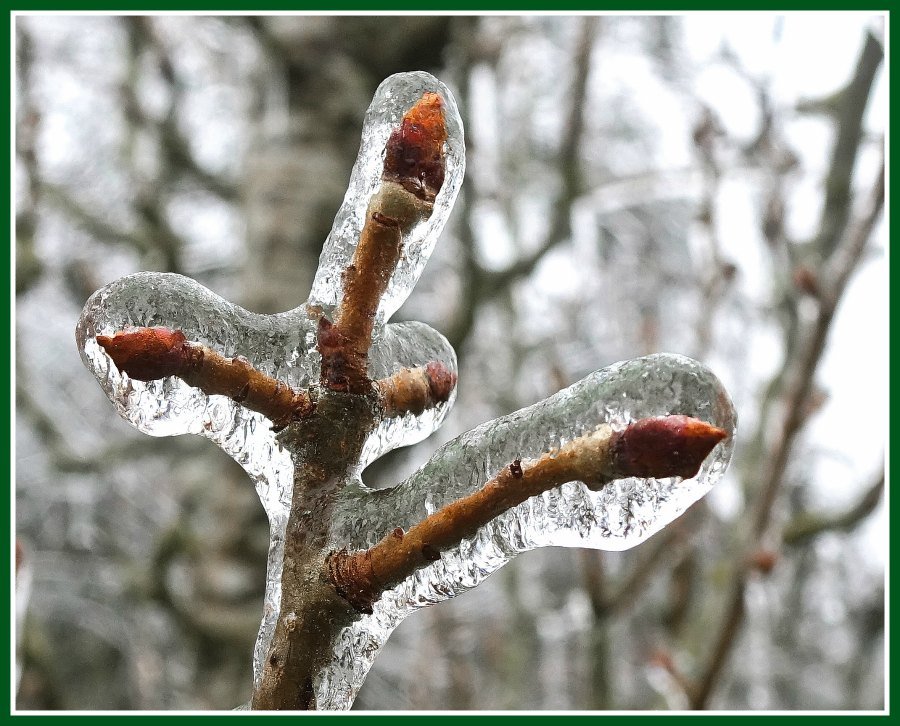
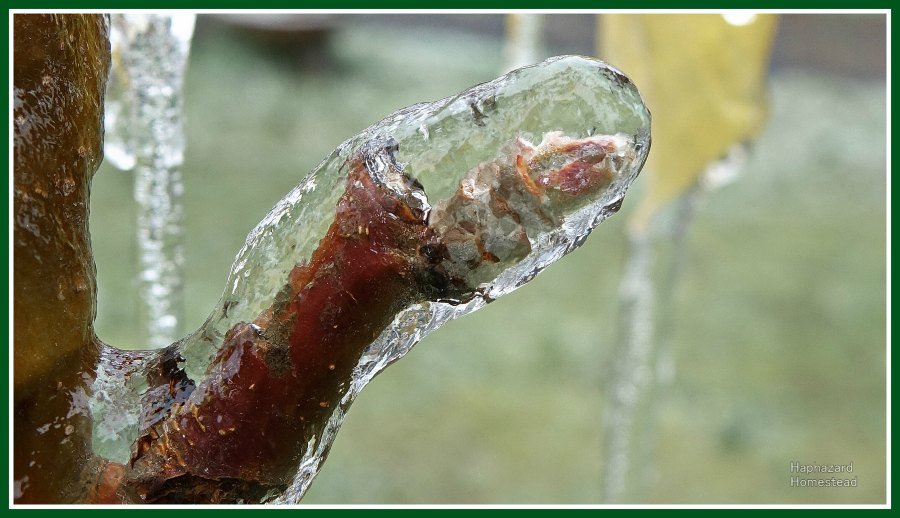
What About You?
Have you ever seen air bubbles in icicles? Could you still have an ice storm this winter or in the spring? Do you have any fruit trees? I would like to know!
Other posts in this Ice Storm Series:
- The Great Willamette Valley Ice Storm of 2016
- Sequoia and Larch Trees
- Blue Spruce and Western Redcedar Trees
- Noble Fir, Grand Fir, and Eastern White Pine Trees
- Douglas-Firs 1
- Douglas Firs 2
- Ponderosa Pines
- Hazel, Walnut, Birch, Holly, and Elm Trees
- Garden Plants
I hope you are enjoying these ice storm photosets. There's only one more left - homestead miscellany. Don't miss it! Because then we have an ice storm party! :D

